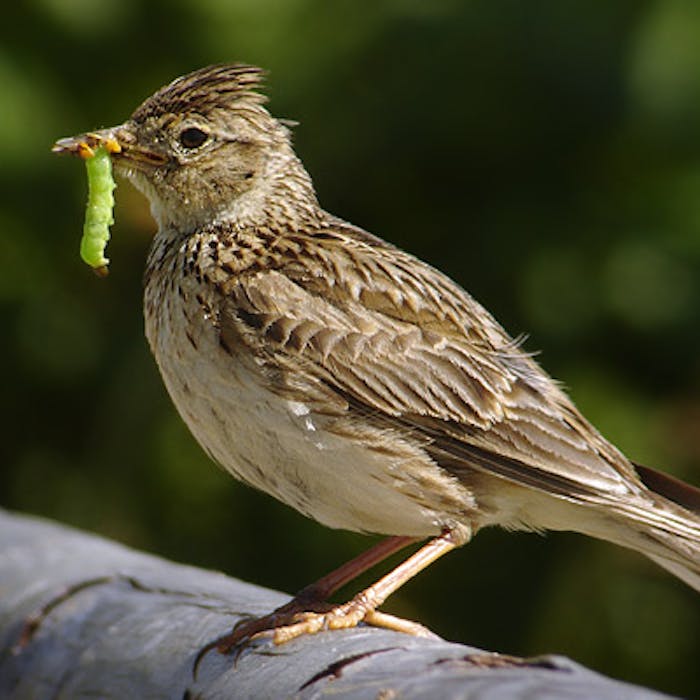
Skylark - the soaring sound of summer
The Skylark is our most common lark and is the subject of much poetry and a famous piece of music by Vaughan Williams. The bird is loved for its high-pitched trilling song, which it makes high in the air over open countryside in summer.
The skylark is a small brown bird, somewhat larger than a sparrow but smaller than a starling. It is streaky brown with a small crest, which can be raised when the bird is excited or alarmed, and a white-sided tail. The wings also have a white rear edge, visible in flight.
The Skylark feeds mainly on seed and grain, but also insects. Skylarks nest on the ground, laying three to four eggs. Chicks become independent after only two weeks and parents can have up to four broods in a breeding season.
The skylark is renowned for its song flight. The male bird rises vertically from the ground high in to the air where it remains stationary for several minutes on fluttering wings before parachuting back down to the ground. All the time it is in the air the bird continuously sings its liquid warbling song.
The recent and dramatic population decline of the skylark in Britain is a cause for concern. Today the population is about one-third what it was 30 years ago. The decline is most likely caused by the move to winter sowing of cereals, which deters late-season nesting attempts and may reduce winter survival because there is less stubble, such as barley and wheat, and also the use of pesticides, which kills the insects needed to feed the young. Consequently, it is on the Red List as a bird of high conservation concern.
However, some farms are now leaving areas of bare unsown patches in their fields to help Skylarks find food to feed their young.
Further reading
Links to external websites are not maintained by Bite Sized Britain. They are provided to give users access to additional information. Bite Sized Britain is not responsible for the content of these external websites.
